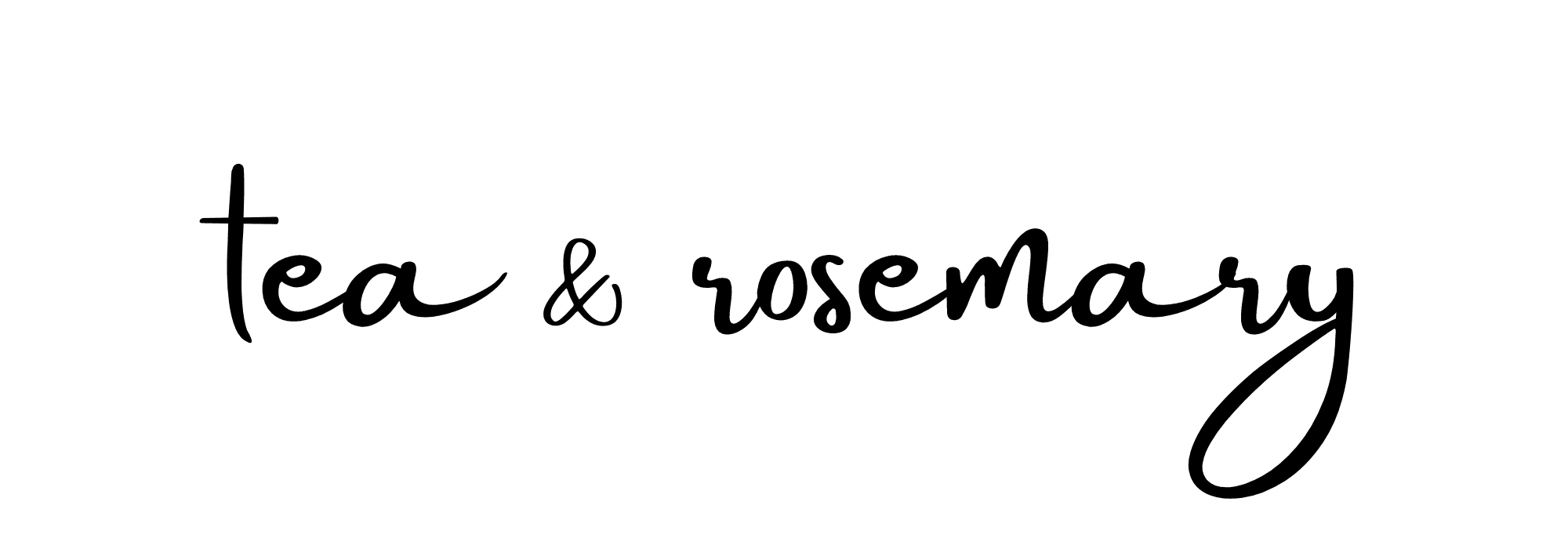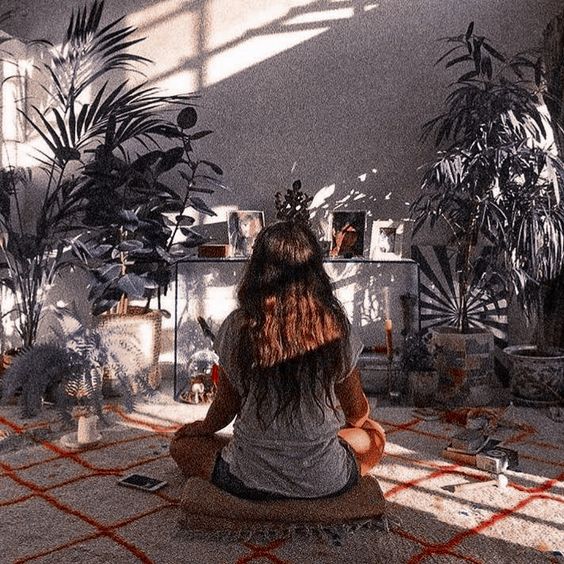If you’re interested in meditation, you may feel a bit daunted because there are so many meditation techniques out there. The first time I tried meditation, I mixed together various types of meditation and it was a huge fail.
Since then, I’ve come to realize that not every meditation type will work for everyone. In fact, some types of meditation make me really angry while others de-stress me right away.
Now that I’ve been practicing meditation for a while, I’ve realized how important it is. Not only is it huge for my mental health, but meditation has also helped me learn how to harness my energetic power and actually use my energy in physical, tangible ways.
Today I’m sharing a bunch of different meditation techniques and types of meditation so that you can think about what might work for you. I’m also sharing my favorite ways to practice each meditation type.
What Is Meditation?
Meditation is a term that covers a wide range of mental techniques. Some people think of it as sitting in silence and emptying the mind, while others see meditation as more like an active process where thoughts are monitored and brought to the surface so they can be examined and released. It’s also possible to meditate by focusing on one thing such as breathing or repeating a mantra.
There are dozens of different types of meditation – some involve physical postures, for example – but all share the goal of helping you release tension from your body and calm your mind.
The best way to find out which type might suit you is simply to try them out!
This article will introduce 24 different types of meditation, including those with no religious affiliation and those based on the teachings of different religions as well as more modernized techniques. You can try as many as you like and decide for yourself which seem the most useful.
What Is The Purpose Of Meditation?
The goal of meditation is not to empty your mind – it’s actually normal and healthy for there to be thoughts in the back of your mind. The real goal is to notice these thoughts and then bring them back to awareness at a later point so you can let them go.
Meditation also helps you reduce stress, improve your self-awareness, help with anxiety and increase your focus on tasks at hand. You may even find yourself becoming happier as the benefits start adding up over time.
Many people practice meditation because they want to be less stressed, more calm, or less anxious or depressed. Meditation can really help with any of these issues.
However, if those reasons for meditation don’t appeal to you, consider that meditation can actually make you a much more powerful spiritual being.
When you meditation, you’re learning how to direct and control your energy. Many of us don’t realize how powerful our own energy is because we don’t know how to use it. Meditation teaches you exactly that!
While meditation isn’t a cake walk, you’ll definitely see the huge strides you’re making over the course of a few months if you stay consistent.
What Meditation Techniques Are Best For Beginners?
There are so many types of meditation, but most experts recommend beginning with breath-focused meditations. These actually have lots of benefits for the beginner – by focusing on your breathing they help you stay relaxed and build concentration. They also can easily be incorporated into daily life.
It’s easier to begin here because it is easy to focus on your breathing, which can feel natural and calming. Breath-based meditations are often taught in conjunction with other types of meditation too, so learning them early on will give you a wider range of techniques to pull from later on.
You may also enjoy guided meditations if you’re a beginner because this type of meditation gives you something specific to focus on in your meditation practice.
Many people enjoy a loving kindness meditation since this is a method that makes us feel instantly good.
However, other people need a movement meditation as beginners, especially those of us who aren’t used to sitting still for long periods of time.
If I had to recommend specific types of meditation for beginners, then I would choose:
- Breathing Meditations
- Mindfulness Meditations
- Focus Meditations
- Walking Meditations
- Mantra Meditations
- Progressive Muscle Relaxation Meditations
- Guided Visualizations
- Candle Gazing Meditations
Ultimately, start with the types of meditation that most appeal to you. If one meditation type doesn’t work, move onto another. There are no wrong answers!
Types Of Meditation:
There are too many different meditation types to really count. Today, I’ll be introducing the most popular types of meditation.
These meditation types all significantly improve your life in some way, whether they work physically, emotionally, mentally, or spiritually.
However, all of these types of meditation are very different, so you will get different benefits from each.
I recommend that you choose the type that appeals most to you and begin there!
24. Breathing Meditation
Meditation always begins with the breath. Even the most advanced “meditators” will still practice the simple breathing meditation, so this is a great place to start if you don’t have a lot of experience with meditation.
Breathing meditation is the most popular type of meditation because it’s so simple. You just have to focus on your breathing patterns.
We tend to breath shallower when we’re stressed, and this actually impacts our energetic power. Breathing meditations allow us to settle down into our bodies and connect with our energy.
A simple breath-focused meditation has several cognitive benefits, such as an increased ability to focus and less of a wandering mind. It also improves your moods by making you feel more positive about life in general or even specific aspects like work projects you are working on at the moment.
The best part is that this technique can be done anywhere without any equipment needed – just simply sit down and focus on your breath.
There are many different breathing meditations that you can find on YouTube, but you can also conduct a meditation all by yourself, even if you’ve never done it before. Breathing meditations are really simple.
I like Dr. Andrew Weil’s 4-7-8 Breathing Technique. It goes like this:
- Begin by emptying your lungs.
- Breathe in through your nose for 4 seconds.
- Hold your breath for 7 seconds.
- Exhale firmly through your mouth, pursing the lips, for 8 seconds
- You may repeat this breathing cycle up to 4 times.
Stop this exercise if you start to get dizzy. You simply need to work up to more times since you probably aren’t used to breathing deeply.
This exercise can actually act as a natural painkiller, whether this applies physically or emotionally.
Later, you can move on from simple breathing meditations into other types of breath-focused meditations, such as chakra meditation or even sound healing , which are more advanced forms of breathing meditation.
At its root when practicing a breathing meditation, you’re just focusing on your inhales and exhales and noticing how they feel in different parts of your body. You can do this just about any way you’d like.
23. Mindfulness Meditation
This technique aims to bring awareness back to your thoughts and actions. It’s based on the concept of observing without judging, so you simply watch what’s happening in real time – such as how your body feels or your breath moving – without trying to influence it.

It’s often used to help people with emotional or physical pain, as it helps you learn how to accept the present moment without trying to change anything about it. Mindfulness meditation is great for both beginners and advanced meditators alike because of its simplicity.
If you’re just starting out, then I recommend that you begin with the basic mindful breathing technique. You can later move into mindful awareness techniques like sound healing or mental detoxification , which are more advanced forms of mindfulness meditation.
Although there are several different types of mindfulness meditation techniques, they all have the same goal in mind which is to bring awareness back to your body and how you’re feeling.
Some people use mindfulness meditation to help them deal with chronic pain or mental illness, while others may simply want to reduce their stress levels so they can feel happier throughout the day. It’s really up to you when practicing this kind of meditation because it’s so versatile.
Another great thing about this type of meditation is that you don’t need any equipment or space – just simply sit down and focus on your breath.
Here is a simple step-by-step guide for practicing mindfulness meditation:
- Sit comfortably, then close your eyes and focus on the present.
- Notice how your body feels in different parts, paying close attention to minute details like what you’re feeling right now.
- Don’t try to change anything – just observe it as it is.
- You may also include sounds or smells that surround you into this meditation – just keep observing without trying to change a thing.
- Once you feel complete with the session, slowly open up your eyes and move onto whatever activity lies ahead of you.
As you can tell, this mindful meditation exercise seems really simple, but it can actually be incredible different to simply observe. The idea is that you’re witnessing the world without judging it.
This is a really powerful exercise that can rewire your thought process over time!
22. Mantra Meditation
This type of meditation is based on sound vibration . A word or phrase that has a positive meaning for you is repeated over and over again to help calm your mind and release tension from your body.
For this type of spiritual meditation, you need to pick out a word or phrase that resonates with you. It can be in any language, but it should have meaning to your life in some way.
You then repeat the mantra over and over again, which allows you to relax your mind, release negative thoughts, and give yourself positive energy.
Here are some mantras that I really like:
” Om ” – represents perfection in many spiritual traditions, including Hinduism and Buddhism
” Auṁ ” – is often considered the most powerful of all sounds in India
” So Hum ” – means ‘I am that’ which is used for self-realization when reciting this mantra
“Ek Ong Kar” – means ‘God is One’ and is a Sikh mantra.
If you really want to get the most out of mantras, then I recommend that you find one or two special ones for yourself. You can either make up your own, or choose from the ones already written in this article!
Once you pick out your mantra(s), always make sure to say them with love and respect. If they don’t feel right to you, it’s best not to use them at all because this exercise will be pointless if you don’t like what you’re saying.
Imbedded within each mantra are specific vibrations that help release tensions around certain parts of your body when said aloud. So for example, if there’s a part of your body that feels extra tense, say the words ‘so’ and ‘hum’, which are combined to release tension in the upper chest.
Although the sounds above are awesome because they embed these vibrations into your life, you can also choose and affirmation or phrase that you really like. Do what feels right for you.
You can close your eyes and simply say the word or phrase over and over again. You’ll find that you fall into a sort of trance over time. Try to do this for at least five minutes, but you can work up to ten or fifteen minutes over time.
21. Candle Gazing Meditation
This type of meditation involves staring at a candle flame until your eyes water – then slowly moving away from it. It’s said this will build up your capacity to concentrate so that you’ll be able to meditate more effectively in future.
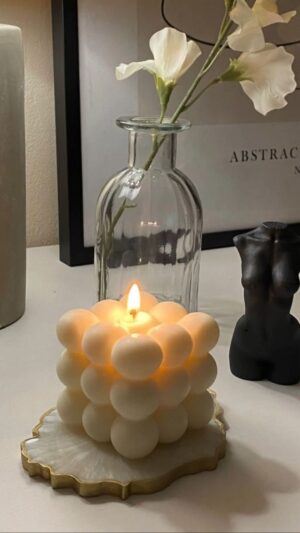
You’ll need a candle for this exercise. The key thing is to have one that isn’t too bright, so you should only use a standard candle or flameless tea light.
Once your candle is lit, sit about 4-6 feet away from it with your eyes open. Focus on the flame and watch it closely – don’t try to change anything!
After 20 seconds, focus even harder on the flame. This time you should close your eyes for just 10 seconds. Don’t worry if they water – but make sure not to wipe them because this will break concentration.
You can always tilt your head backwards or open up your palms over eyes if things get really blurry due to watering.
As soon as you finish focusing on the flame, remain where you are and rest in the moment for about 30 seconds. Try to ground yourself in your surroundings and don’t think about anything else.
Repeat this process five times. Relax between each time by taking three very slow breaths, then return to staring at the flame until your eyes water again.
As mentioned, this is meant to increase concentration over time. So try doing it every day for 10 minutes if you can commit to it. You shouldn’t find it too difficult because after a week or two, you’ll get used to the process of closing your eyes while meditating. It gets easier very quickly!
Only do this exercise when you have a candle that’s not too bright, otherwise it will be incredibly difficult to keep your eyes focused.
Although this is a sophisticated type of exercise, it’s been done for centuries by lots of people from all walks of life. There are no real ‘rules’ here, so you can experiment and change things up depending on what makes your practice more effective in future.
The key thing is staying relaxed while concentrating on a specific word or phrase for between five and fifteen minutes. If you’re struggling, try going back through this article and picking out another mantra that feels right to you because that might be easier!
You can also mix this technique with the mantra meditation technique. Alternatively, you can keep your eyes focused on the candle for 5-10 minutes at a time in order to enter a trance.
20. Focused Attention Meditation
Focusing meditation is a way of keeping your mind still in order to enter a trance. It’s also supposed to help you tap into the subconscious, which has great benefits when it comes to combating stress and anxiety.
You can use one of three different tools for this style of meditation:
- A candle flame
- A spot on a wall
- A picture that you develop in your mind’s eye
The idea is to focus on only the object that you’ve chosen for a set amount of time. You can then give yourself a few minutes to let your mind loose again, before you return to focusing.
Try to empty your mind of all other thoughts and notice when your focus is broken. Over time, you will find that your focus improves drastically. This increases concentration and mental power in a variety of ways.
19. Mindful Walking Meditation
If you want to meditate but feel that sitting down is just too uncomfortable, this movement meditation technique may suit you.
It involves focusing on one step at a time while walking slowly, paying attention to the sensation of each foot on the floor and then lifting and moving forward again. You can try it indoors or outdoors for greater benefit.
If you find yourself getting distracted by stray thoughts, bring your focus back to the feeling of your feet touching the ground. Learning how to walk mindfully will help improve other aspects of your daily life.
At first, try walking around in a small circle or square while focusing on sensations that arise underfoot. After mastering that technique for between five and ten minutes at a time, start walking around in circles again but this time try walking backwards.
This is a great physical meditation for those of you who have trouble sitting still! Over time, you will find that your mental acuity increases due to this physical meditation practice.
I recommend this meditation for anyone who’s mental health deteriorates when they struggle to meditate. It always brings me an instant sense of inner peace, even though I’m constantly moving around.
I like to call this mindfulness movement; it’s really conducive to everyday life since you can do it without anyone knowing.
18. Guided Visualization Meditation
This form of meditation involves using visualization techniques to create mental images, often combining this with relaxing sounds such as those of nature or a beach. The idea is this will help you relax and release tension from your body.
You must find a quiet spot where you can do this exercise without distractions. Then, sit or lie down somewhere that’s comfortable and begin to focus on your breathing for at least ten minutes.
After becoming more relaxed, try closing your eyes and visualizing yourself walking along the beach beside the water. Try seeing the sun glistening on the waves as they crash onto shore. Hear seagulls in your mind’s eye as you take each step closer towards the sea before peering out across the horizon. This may be enough to induce relaxation for some people if they practice it regularly, but feel free to experiment with adding sound effects like those listed above if they help you stay focused.
You can also find great guided visualization meditation options on YouTube or through apps on your phone. Make sure that ads won’t interrupt your guided meditation since that will definitely hurt your focus.
Try not to worry if you struggle to stay focused during your guided meditation. Over time, you will become much more directed and this will increase your energetic power and mental clarity.
You may feel physical sensations during your guided meditation because your body struggles to give over to your mind. Again, trust that your body will come to recognize meditation with enough practice and don’t worry.
17. Loving Kindness Meditation
If you are feeling loving today, this form of meditation could be perfect for you. The loving kindness meditation is a Buddhist-inspired practice that helps you feel positive emotions about yourself and others. You can focus on anything that makes you feel happy in order to generate more positivity in your life.
For example, try thinking about the people in your life who bring out the best in you, even if they’re not family members or friends. Try to remember the good things about them when deciding how much love to send their way during your meditation session. You don’t have to think of anyone specific either; just use feelings of warmth, happiness, gratitude or other positive emotions that make it easier for you to visualize and feel loving kindness.
In this technique, you pick a phrase that you will use to begin your meditation. “May I be happy,” is one example of a nice opening line. However, as long as it’s short and simple enough for you to remember, any phrase can work as long as it makes sense to you.
Visualize the person or people in question appearing before you through your mind’s eye and repeat your chosen phrase. As much as possible, try focusing on how much better off they’d make you if they received whatever it is that would make them happiest at present. You could also focus on positive memories associated with these individuals for greater effect.
As an alternative, try repeating phrases such as “I am loved” or “I love myself” during meditation. To some, this might feel strange or uncomfortable at first, so start with small phrases or even shorter words if you need to. Eventually, however, you will likely become comfortable meditating on positive feelings about yourself and others in your life.
I like to do this meditation while picturing myself. You can do the same thing, but feel free to picture yourself at any age. If you’re struggling with a certain part of yourself or feel unworthy in some way, this can be really cleansing.
You can say the words out loud or you can engage in a silent meditation and speak to yourself in your head. Either way, you will definitely feel a shift in your well being, since you’re sending direct positive energy to your soul.
This is a great meditation for anyone who struggles with mental health. It will definitely make you feel more positively about yourself and can even invoke warm and tingly physical sensations. I always recommend the loving kindness meditation to anyone who believes they simply can’t meditate.
16. Insight Meditation
Insight meditation is very similar to mindfulness meditation in that you remain aware of your surroundings. However, unlike mindfulness, the purpose of mindfully gazing at an object or item with closed eyes is so you can fully immerse yourself in its beauty – both through sight and sound if applicable.
You will picture the object in front of you in your mind’s eye (which is your visualization in your head), so you won’t actually be seeing the object, even though it will be physically in front of you.
Closing your eyes during this type of meditation allows your ears to better absorb what you’re witnessing before your body.
This could be something as simple as a single blade of grass in the middle of a concrete jungle or it could be something more complex like the chirping sounds made by birds flying in various directions above you.
You can also try meditating on someone’s voice for greater insight into who they are and how they make you feel.
The idea is that without sight, we are able to more clearly see the things that matter. As humans, our sight often clouds us because we only believe what we can see. When we cut off this sense, we are able to learn things about ourselves that were hidden.
15. Progressive Muscle Relaxation Meditation
Progressive muscle relaxation is one of the best ways to get rid of stress and achieve a positive state of mind. It works by helping you clear your head of whatever problems are piling up for you, one limb at a time.
Find a quiet place to sit or lay down comfortable. Once you’re settled, you will mentally relax each area of your body. Focus on just one area until it feels totally relaxed, then move onto the next area.
You will want to start with either your toes or your fingers first. Once they’re nice and relaxed, move on to the next section of your body: your feet, followed by your ankles, your calves, your knees, and your thighs.
It’s best to take your time with this step and not rush, so you should continue until you’ve completed each section of your body.
Next come the upper legs, followed by the hips and butt, your torso or stomach area (the core), your chest and arms (if you started with feet), neck, then face face, finishing off with either the top of your head or forehead.
You can alter this method as needed if it doesn’t seem like it’s working for you. Some people prefer starting at different areas depending on their particular issues and desires. Do whatever works without causing yourself damage or unnecessary pain.
This is one of my favorite meditations because the physical sensations are strong. I feel really relaxed after this guided meditation and it’s definitely good for my mental health.
In fact, the Progressive Muscle Relaxation Meditation is best for those of you who want to experience bodily sensations while you sit quietly in meditation. It’s also good for your physical health and can even help you go more comfortably into a guided imagery meditation or other types of meditation.
I like to start with this muscle relaxation meditation before doing any other deep meditation types. It simply helps me get going and works kind of like a body scan. However, it can definitely take some practice to get your body completely relaxed and into a comfortable position, so don’t worry if your nervous system acts up on your first try.
14. Zen Meditation
This form of meditation is based on Buddhism. It involves sitting in a quiet place with your eyes closed (or at least partially closed), and contemplating the present moment and what it means to be alive.
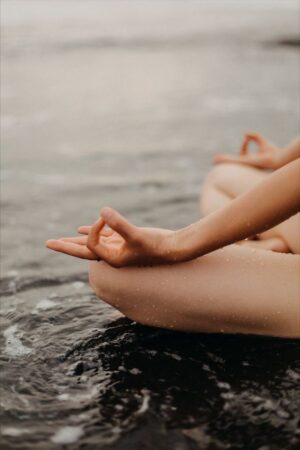
The idea is that you let words, ideas, or images pass without getting involved in them. During a Zen meditation, you aren’t attempting to block out thoughts, but you aren’t getting emotionally involved, either.
It can be helpful to focus on the breath during a Zen meditation in order to let everything else fly by.
The Zen meditation is one of the most ancient Buddhist traditions. In fact, many Buddhist monks dedicate their entire lives to this ancient practice.
It’s one of the most well-known meditation styles for a reason! While this meditation isn’t exactly simple to master, it is easy to practice as a beginner. It’s also one of the best types of meditations for anxiety.
13. QiGong Meditation
In this type of meditation , physical movements are combined with breathing techniques to bring yourself into a state of calmness and serenity. If you practice yoga, for example, you’ll probably already be familiar with some qi gong techniques!
A master can control their qi (or life energy) with the mind, but beginners should only attempt to work with their own qi. You do this by focusing on your breath and moving it through your body, then feeling your muscles relax as you exhale.
You want to focus on the breathing patterns themselves more than anything else. Your hands should be clasped together while you sit in a comfortable position. Then, raise them above your head using only the strength of your arms while still keeping them clasped together.
Once they are at shoulder height, move them down toward level with your heart while breathing out slowly through your mouth . After reaching level with the heart, bring them up again so that they are back above your head while breathing in again through your nose.
The entire process should take about five minutes to complete, depending on how much time you have. During the downward motion, you want to imagine energy or qi flowing out of your hands and draining away from your heart area. While moving upwards, you should imagine energy coming back into the body through your hands.
Repeat this process ten times for best results. The main goal is to stay present in the moment while performing these movements so that you are not thinking about anything else! If images pop into your mind, simply let them pass without analyzing them any further than that initial realization of their presence within your mindscape.
If this seems complicated, feel free to look up the QiGong Meditation on YouTube – there are lots of examples. Over time, once you master the QiGong Meditations, you will move onto tai chi, while is actually a form of martial arts.
The idea is that you have learned how to control your energy to the point where you can harness what you need. I definitely recommend this meditation type for anyone interested in energy work!
12. Yoga Meditation
Yoga Meditations are a combination of breathing techniques and simple meditation practices. You can use yoga as a way to calm your mind before practicing other forms of meditation, or you can make it your main course.

The goal here is to be able to let go of any physical distractions that may arise while maintaining control over yourself and staying present in the moment. In general, this process should begin with either a sun salutation or tree pose , which are poses designed to stretch out your muscles and get them ready for relaxation.
After you have gotten into position, breathe deeply from the diaphragm so that each breath fills up all areas within your lungs. Take 5-10 deep breaths, then relax completely and take a few minutes to observe your surroundings before returning to your normal activities.
This is a wonderful type of meditation for beginners because there are very few steps involved. If you have the time, you can stretch out your muscles further but it’s not necessary. The goal here is all about being present within the moment and controlling yourself, rather than focusing on specific techniques or items.
You can look up various types of meditation yoga on YouTube or you can easily join a class. Once you know the basic poses, it’s simple to practice at home on your own.
Yoga is a great way of reducing stress and can help you relieve tension in your life through physical practice!
11. Open Monitoring Meditation
Open Monitoring Meditation is exactly what it sounds like: open.

You are supposed to observe your surroundings without judging them or trying to focus on specific items. Your mind should be open and ready for anything that it encounters within the moment.
This type of meditation does not involve any type of movement at all, nor does it require focusing on breathing techniques or images in your mind. Instead, you want to become aware of everything around yourself – people chatting outside, the feel of the ground against your feet, etc.
The goal here is not to create mental barriers between what you experience through your senses but rather to let them flow together as one unified whole.
It helps if there are very few distractions in the area where you are practicing this form of meditation because it requires a lot of focus. The idea is to allow your mind to “be free” and not try to control anything about yourself or the moment you are in.
Open monitoring meditation is great for beginners because there are very few steps involved. You can practice this form of meditation anywhere that you feel comfortable, so it’s easy to fit into any schedule!
Try taking the time after work, during lunch breaks, or even before bedtime – no matter what you choose, this type of meditation will help calm your mind and give you more room to breathe within your everyday life.
I like to do my open monitoring meditation just before bed. I sit down and let myself openly monitor things for five minutes or so. I always feel more relaxed and in-tune with my own energy, even though it doesn’t feel that I’m doing much when I practice this meditation.
10. Kundalini Meditation
This is another form of mantra-based meditation that’s often used in conjunction with yoga. The aim is to raise ‘kundalini energy’ up the spine and into the head, where it eventually bursts through and creates an explosion of awareness.
This is a very unique meditation practice that can be difficult to explain – you’ll just have to give it a try! Kundalini involves chanting various mantras over and over again while using special breathing techniques.
You do not want to push yourself too hard when you are trying kundalini for the first time – take your time and go at your own pace. You should never feel any type of pain or discomfort, nor should you force anything physically.
Kundalini is closely linked with chakras , which are spinning wheels within our bodies that connect us with our mental and physical functions. The kundalini energy is meant to flow through these chakras in order to purify them and bring you an enhanced sense of mental clarity.
This meditation can be very difficult for beginners because it requires a lot of spiritual ‘cleansing’ before any progress can be made. It’s important that your mind and body are fully prepared so you do not cause yourself harm while practicing this type of meditation.
You will need the assistance of a teacher and / or experienced yogi in order to try kundalini for the first time, or you’ll need to do some research online before practicing so you get off on a good foot.
9. The Transcendental Meditation Technique
The transcendental meditation technique is one of the most popular forms of meditation, but not everyone is aware of the full benefits that it offers.
The Transcendental Meditation technique is different than other types because there are absolutely no mantras or visualizations involved – all you have to do is sit down and relax.
This type of transcendental mediation contains four steps:
1) Relax your body, sitting comfortably with your eyes closed
2) Think about a mantra (in this case, you would repeat ‘so-hum’ inside your head over and over again)
3) Notice when your mind starts to wander and bring yourself back to thinking about the mantra
4) When you notice yourself getting distracted, go straight back to repeating the mantra in your head; if possible, try to think about it continuously
The end goal of this transcendental meditation is to keep repeating the mantra in your head without any interruptions – you should eventually enter a ‘transcendental meditation state’ where time and space begin to fade away.
I personally feel that everyone can practice the transcendental meditation technique, from beginner practitioners to advanced. However, don’t be upset if it’s really tough at first.
It can take at least a few months before you notice significant progress, but I always feel that changes happen suddenly! The first thing you will notice is that you’re much more aware of your mental sensations.
You may also gain insights about what you feel is your true nature, which is a deep sense of self knowledge.
8. Chakra Meditation
The goal of Chakra meditation is to balance the different energies in your body. There are seven chakras in total, and all of them work together to maintain a sense of harmony within your life.
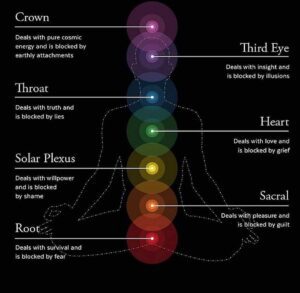
Chakra meditation can be practiced through breathing techniques, mantras, visualization, or meditations . Each of these methods will have different results for everyone who practices them, so I recommend you try all types before making up your mind about which method you prefer.
It’s also important to remember that if one part of our energy system is out-of-whack then it significantly affects the rest of your being – that’s why chakra balancing meditation is so powerful!
You can close your eyes and focus on each chakra, opening and rebalancing it, before bringing your system into alignment. You can also find a guided meditation on YouTube, or you can use your pendulum or your hands to physically (and energetically) clear and rebalance your chakras.
Pay attention to each chakra and make sure that it’s properly balanced before moving onto the next. At the end of your meditation, you should feel totally in alignment, from your root to your crown chakra.
7. Vipassana Meditation
Vipassana meditation is one of the most difficult types to practice properly, but it’s also one of the most powerful. It’s an ancient Indian form that is almost 2500 years old.
This type of meditation encourages you to focus solely on your breath while clearing your mind completely. It’s often referred to as being ‘mindful’, but many people use this technique for deep introspection once they get better at maintaining their concentration throughout their meditations .
Some people become so good at Vipassana that they can actually look inside themselves and see their own internal organs working! That said, I don’t recommend you try this unless you have a lot of spiritual cleansing before hand or are working under an experienced yogi.
Keep in mind that this ancient tradition takes many people entire lifetimes to master. Don’t be discouraged if you can’t get it right away.
6. Contemplative Prayer Meditation
The goal of contemplative prayer meditation is to turn your attention away from the world and towards God. This type of mediation is meant to heighten your spiritual connection with whatever you believe in, whether it’s Jesus or another higher power.
It’s primarily a Christian meditation, though anyone who feels a connection with God and Jesus (or another higher power) can do this meditation.
While practicing contemplative prayer, you should feel like you are having a conversation with someone else. You can even imagine what it would be like if God was standing right next to you!
Make sure that you’re sitting comfortably, then close your eyes and think about all the things that matter most to you at that moment – then talk them out loud as if God could hear them.
5. Heartbeat Meditation
Heartbeat meditation is a special type of meditation that requires you to focus on your heart and the beat of your own pulse. It’s another effective way to learn more about yourself and what makes your soul tick, which in turn can help you better understand how to motivate yourself .
Before you start this type of mediation, lie down comfortably with a pillow under your head, then close your eyes and take a deep breath. Imagine that all of the pressure in your body is being pushed towards the soles of your feet – from here, imagine it all flowing out through each pore so it leaves via the top of your head.
From there, think about how good it feels when you breathe naturally through your nose or mouth. Focus on the natural rhythm of your breathing and how good it feels as you inhale and exhale. If you feel distracted, don’t worry – just acknowledge the thought and move onto next one .
If you can focus completely on your heartbeat, to the point where it almost seems to disappear from consciousness, then let yourself drift off into a state of deep relaxation. You might even fall asleep. This is totally normal – the only focus attention you need to really have is on your heartbeat.
4. Effortless Presence Meditation
Effortless presence meditation is a type of yoga and mindfulness training that helps you to clear your mind and focus on the present moment. It’s meant to be done while you’re standing, but if the ground is too hard for you then it’s fine to sit down.
Close your eyes and get comfortable, then focus all of your attention on the soles of your feet. If possible, try touching them together so they can press up against one another – this will help keep your mind focused on being here now. You might have trouble keeping it together at first, but give it time – an open mindset is essential!
You should feel relaxed throughout this entire meditation. Mentally remind yourself that you’re doing a good job and that you don’t need to worry about anything besides your breathing and how it makes you feel in this moment .
3. Metta Meditation
Metta meditation is one of the most basic forms of Buddhist meditation, though anyone can do it! This type of meditation focuses mostly on empathy and using compassion to be kinder towards yourself and others.
Before you begin Metta mediation, get comfortable either sitting or laying down with your eyes closed. Recline if necessary so you can relax for this practice. Once you have achieved a state of deep relaxation, imagine all the positive things that might exist in your life – think about faith, love, peace or any other virtues that will help anchor a sense of self-worth for you.
Once you have envisioned all the wonderful things that exist in your life, think about how each one makes you feel. Contemplate on these emotions and let them wash over you – it will help improve your sense of self-love because it’s rooted in reality.
This is a great way to focus on feeling universally accepted if you have anxiety or depression.
2. Journalling Meditation
A journalling meditation is a type of mindfulness exercise that requires you to focus exclusively on writing down random thoughts rather than thinking them internally. It can be an effective way to let out any pent up feelings so they don’t weigh heavily on your mind.

Before beginning this style of meditation, sit down with pen and paper (or typing if it’s easier) then close your eyes and try to relax all the muscles in your body. This will help you focus on your breathing, then allow the things that are bothering you to come out.
If it helps, talk to yourself in first or second-person perspective by saying “you feel” instead of “I feel.” This will make the process easier if other people’s words trigger you – but give it a try because it can really help lessen feelings of isolation .
1. Hayashi-Hiden
This form of meditation is based on Shintoism and involves focusing your awareness and energy into a small or narrow space, such as the point where your hands touch each other. This is meant to help you focus on the present moment instead of letting it become an escape route.
Before starting Hayashi-Hiden, lie down with your hands touching each other (palms facing up) and let yourself relax.
Once you feel like every muscle in your body is relaxed, imagine that all of your problems are small dots or points that can be easily overcome. Now visualize those things becoming insignificant as they move further away into the distance, leaving only the present moment remaining.
What Are The Best Meditation Techniques For Beginners?
Knowing where to start can be daunting for someone who doesn’t meditate regularly. This is why so many people opt for guided meditation, which allows you to follow along with a pre-recorded audio track.
Other good options for beginners include breathing meditations, mindfulness meditations, physical meditations, Progressive Muscle Relaxation Meditations, and any specific mantra meditation.
If you feel like you need help, I recommend looking up your favorite kinds of meditation techniques on YouTube.
The truth is that some meditation techniques work better than others depending on what you want to get out of the process. For instance, if you’re more interested in mindfulness then you should check out “focused awareness,” while an open-minded approach works well with “insight” meditations.
What Are The Best Meditation Techniques For Anxiety?
If you struggle with anxiety and want to calm down, I recommend using the “4-7-8 breathing” technique. This can help you relax quickly.
You may also want to do the progressive relaxation meditation to physically relax your body.
Any of the focused meditations will work well for anxiety because they teach your mind to stay on track instead of worrying.
If you have anxiety over specific things, the loving kindness meditations or the mantra meditations can be helpful.
What Are The Best Meditation Techniques For Depression?
While any meditation technique can help with depression, I find that the most helpful options are those that actively work to rewire the thought process.
Basically, depression makes you think in absolutes (black and white thinking) which can be very negative and self-harming.
I would recommend starting with the loving kindness meditation, though the journaling meditation can also be helpful, as well as any of the focus meditations.
The mindfulness meditations and the mantra meditations can also be helpful (make sure you choose a positive mantra to work with).
What Are The Best Meditation Techniques For Stress?
Just about any meditation on this list will be helpful for stress!
Mainly, pick the meditation that makes you feel the least stressed. No one meditation is a good fit for everyone, so you’ll need to experiment.
After your meditation, you want to feel extremely relaxed, as though you pressed the reset button. I recommend starting with the easier meditations before moving onto specific techniques (like focusing on a particular object or some of the eastern traditions techniques).
What Are The Best Meditation Techniques For Anger Management?
Honestly, my answer is the meditation technique that makes you the least angry.
Sometimes, the act of meditation makes me angry because I just can’t sit still. I often find that I need to start with a physical/walking meditation before I’m able to move onto breath work or other practices.
However, meditation in general helps with anger issues, so seriously: do whatever makes you feel truly calm right away.
